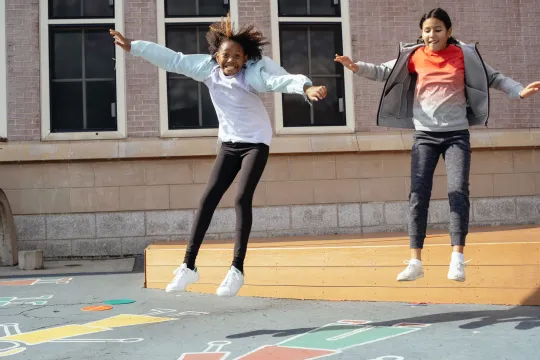Green Schoolyards America partners with school districts and public agencies across the U.S. to establish large-scale living schoolyard programs that transform school grounds into ecologically-rich, park-like green spaces. Our goal is to improve children’s health, learning, and happiness while contributing to communities’ ecological and climate resilience.
We are working to change the paradigm for school ground design, use, and management so all children will have access to the natural world in the places they already visit on a daily basis. We center equity in our work and collaborate with communities that have the greatest need for educational, environmental, health, and open space improvements.



